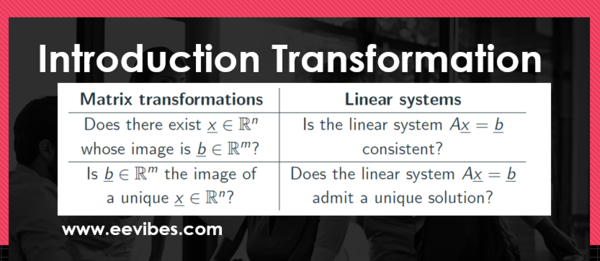
Introduction to Linear Transformation
Linear transformation is a fundamental concept in linear algebra that describes a mapping between two vector spaces that preserves the algebraic structure of those spaces. In simpler terms, it is a mathematical function that takes vectors as input and produces vectors as output, satisfying certain properties. Let’s delve into the key aspects of linear transformations and their properties:
Linear Transformation:
A function T:V→W is considered a linear transformation if, for any vectors u and v in the vector spaces V and W, and any scalar c, the following two properties hold:
- Additivity: T(u+v)=T(u)+T(v)
- Homogeneity: T(cu)=cT(u)
These properties ensure that the linear transformation preserves vector addition and scalar multiplication.
Properties of Linear Transformation:
Preservation of Vector Addition:
T(u+v)=T(u)+T(v) The sum of vectors in the domain is mapped to the sum of their images in the codomain.
Preservation of Scalar Multiplication:
T(cu)=cT(u) Scalar multiplication in the domain is mapped to scalar multiplication in the codomain.
Preservation of the Zero Vector:
T(0)=0 The zero vector in the domain is mapped to the zero vector in the codomain.
Linearity of the Transformation:
The combination of additivity and homogeneity ensures that the transformation is linear.
Matrix Representation: Linear transformations can often be represented by matrices. If T:Rn→Rm, then there exists an m×n matrix A such that T(x)=Ax for all x in Rn.
Kernel and Image (Range):
Kernel (Null Space):
The set of vectors in the domain that map to the zero vector in the codomain. It is denoted as ker(T) or null(T).
Image (Range):
The set of all possible images of vectors in the domain. It is denoted as im(T) or range(T).
Understanding linear transformations and their properties is crucial in various mathematical and scientific disciplines, including physics, computer science, and engineering. These concepts serve as a foundation for more advanced topics such as eigenvalues, eigenvectors, and matrix diagonalization.